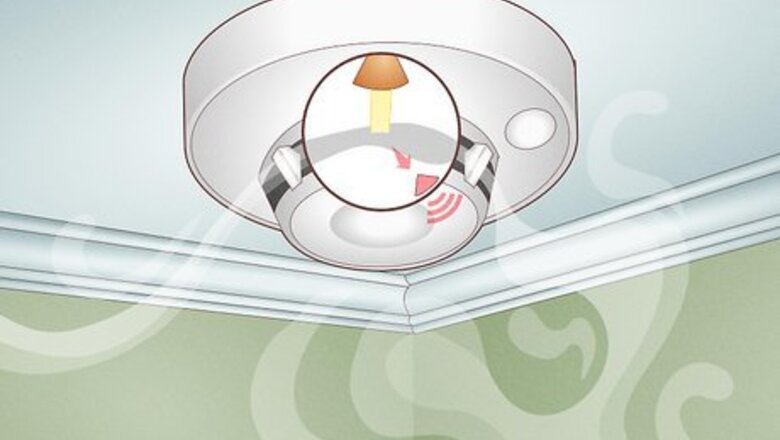
views
X
Research source
[2]
X
Trustworthy Source
National Fire Protection Association
Nonprofit organization devoted to eliminating death, injury, property and economic loss due to fire, electrical and related hazards.
Go to source
. Remember to check that your installation complies with your local building and fire safety regulations, and wherever possible, follow the installation instructions given with the smoke detector you are installing.
Choosing a Detector

Use a photoelectric detector in most cases. A photoelectric detector uses light to detect whether smoke is present or not. When smoke enters the detection chamber, it causes a light beam to be deflected and scattered and picked up by the light sensor. This gives an opportunity to put out the fire before it escalates into a bigger catastrophe.

Use an ionizing detector outside of kitchens. An ionizing detector uses radioactive particles to ionize the air inside the smoke chamber; when smoke enters it causes the ionization to drop. Ionizing detectors respond to fast, clean burning fires, giving an opportunity to evacuate the structure. However, it is more prone to false alarms than photoelectric detectors.

Use a combination ionization and photoelectric. These combine features of ionization and photoelectric detectors, providing more comprehensive protection than ionization detectors.
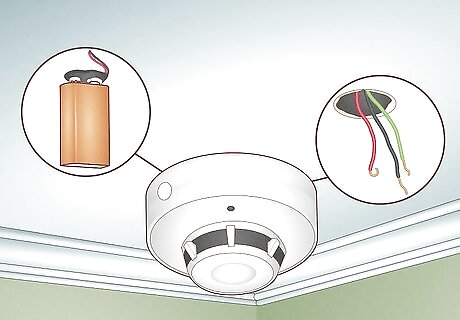
Have battery operated or interconnected alarms. Battery operated smoke alarms will be able to detect smoke even in the event of a power outage, and interconnected alarms allow for other occupants to be warned if there is smoke in another room. You can also have a hardwired alarm with a battery backup.

Use a voice alarm inside bedrooms. Inside bedrooms, a voice will alert sleeping occupants "Fire!" when the smoke alarm is activated, which will wake them up. Voice alarms are standard with many manufacturers, especially in China, Japan, South Korea, and parts of North America.
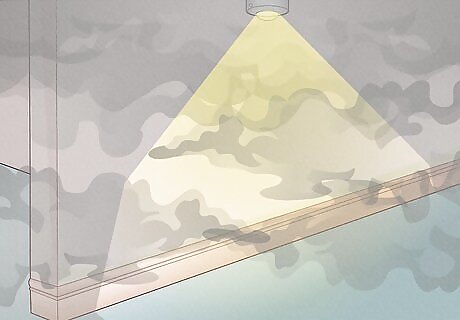
Use a smoke detector with emergency lighting in hallways. In hallways, an emergency light shines through thick or dark smoke, even if there is no power. They may also provide a visual warning of smoke for the hearing impaired.
Installing a Smoke Detector
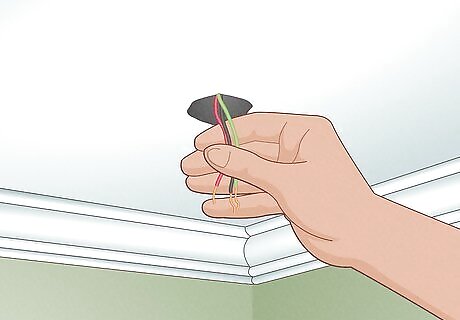
Pass the wires through or connecting to the mount. If installing or replacing a hard wired alarm, you will need to run the connection wires through the center hole of the mount. This will be necessary for when you are connecting the alarm.

Place the mount. The mount for a smoke alarm should be placed on the ceiling or high on the wall. Mount no further than 20 centimetres (7.9 in) from the edge of the wall or ceiling but no closer than 10 centimetres (3.9 in). Also make sure the smoke detector is mounted as high as possible. Use a stud finder and a pencil to mark studs and utilities that you do not want to drill into.
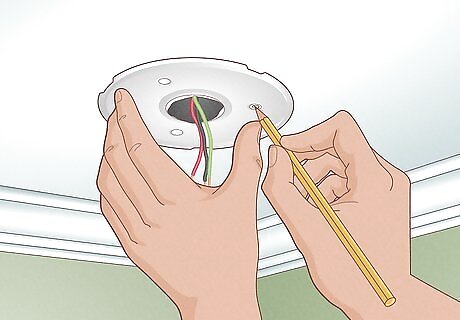
Trace the mount onto the wall. Hold the mount firmly to the wall, and use a pencil to draw out the holes that will need to be drilled. If mounting vertically, also ensure the mount is level.

Drill the holes. Once the mount is traced into the wall, you can drill. Fill the holes with the included plastic anchors if you are drilling away from studs.

Secure the mount into the wall. Using a drill, screw the mount until it is secure. Be careful not to overtighten.

Install a battery, if necessary. Some smoke detectors need a battery to be installed, while others have a sealed battery that fails after the smoke detector needs replacement.

Connect the smoke detector to the mount and wires. Upon securing, the smoke detector will activate and sound a single beep. It may also play a message advising the test of the alarm.
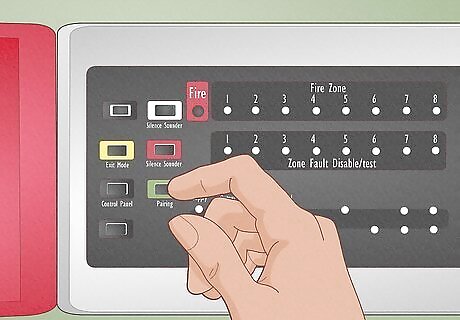
Pair the smoke detector with the central alarm system. If using a wireless smoke alarm, it might be possible to interconnect the alarms with each other or with a central alarm system. Check with the manual to know how.
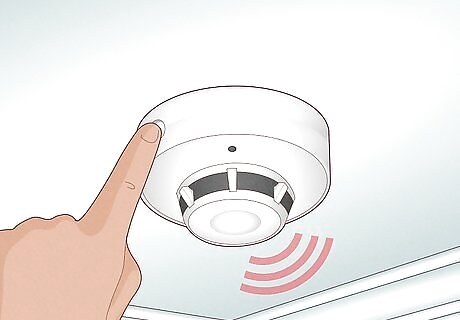
Test the alarm. Press the test button or pull the test cord to ensure the function of the smoke alarm. Depending on the model, you may hear a beep or a short message indicating "normal" status. It may also activate the alarm. Note that if you have a monitored fire or security alarm system, you will need to set the alarm to test mode.
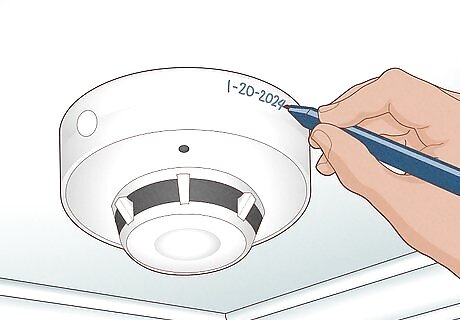
Write the date of install on the smoke alarm. After activation, a smoke alarm will need to be replaced after 5-10 years, depending on the model. Keep note of this installation date so you can replace the alarm when the time comes.



















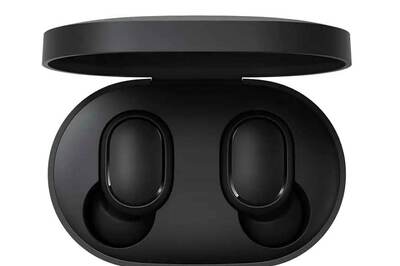
Comments
0 comment